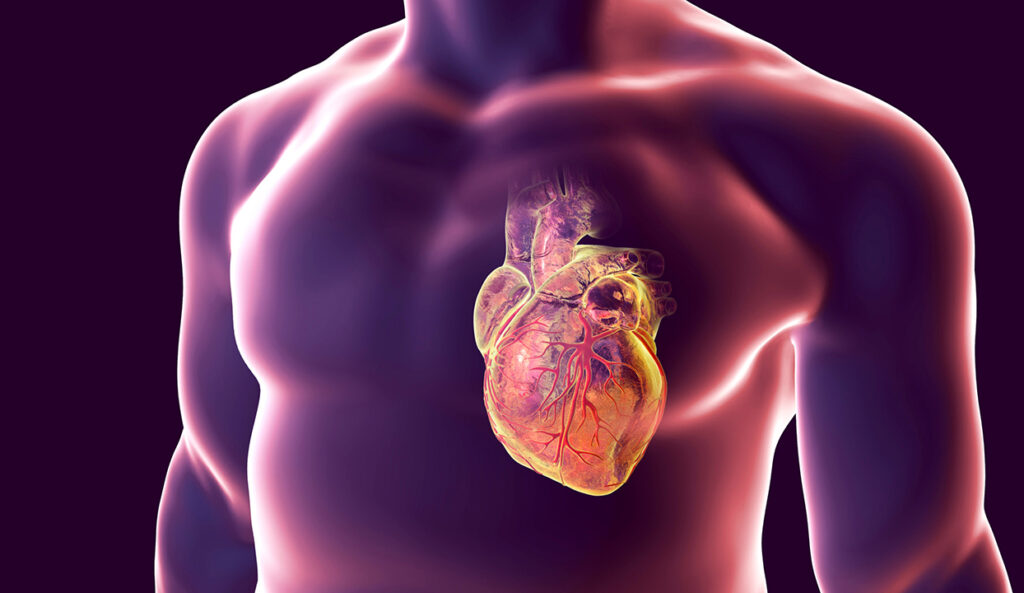What Causes Angina
Angina, a condition characterized by chest pain and discomfort, can be a concerning and alarming experience for those who suffer from it. In this article, you will discover the factors that contribute to the development of angina, shedding light on its origins and potential triggers. By understanding the underlying causes, you can gain valuable insights into how to manage and mitigate the symptoms of this condition, ultimately improving your quality of life. So, let’s explore the factors that lead to angina and empower ourselves with the knowledge to better navigate this health issue.
Overview
Angina is a common heart condition that affects many people around the world. It is characterized by chest pain or discomfort that occurs when the heart muscle does not receive enough blood flow. This lack of blood flow is usually caused by narrowed or blocked coronary arteries, which supply blood to the heart. Angina can be a warning sign of an underlying heart condition and should not be ignored. Understanding the causes of angina is essential in order to manage and prevent this condition effectively.
Definition of Angina
Angina is often described as chest pain or discomfort, but it can also be experienced as pain in the shoulders, arms, neck, jaw, or back. The pain is typically triggered by physical exertion or emotional stress and is relieved with rest or medication. Angina is a symptom of an underlying cardiovascular problem, usually due to reduced blood flow to the heart muscle.
Common Symptoms of Angina
The symptoms of angina can vary from person to person, but the most common ones include chest pain or discomfort, shortness of breath, fatigue, dizziness, nausea, and sweating. These symptoms usually occur during physical activity or times of emotional stress when the heart needs more oxygen and nutrients.

Types of Angina
There are several types of angina, including stable angina, unstable angina, variant (Prinzmetal’s) angina, and microvascular (silent) angina.
Stable angina is the most common type and occurs when physical exertion or emotional stress triggers chest pain or discomfort. The pain typically goes away with rest or medication.
Unstable angina is more serious and unpredictable, occurring even at rest or with minimal exertion. It is a warning sign of an impending heart attack and requires immediate medical attention.
Variant (Prinzmetal’s) angina is caused by a spasm in the coronary artery, leading to reduced blood flow to the heart. This type of angina can occur at rest and is often unrelated to physical exertion or emotional stress.
Microvascular (silent) angina is characterized by chest pain or discomfort that does not show any significant blockages in the coronary arteries. It is often experienced by women and people with diabetes.
Risk Factors
Several risk factors can increase your chances of developing angina. It is important to be aware of these factors and take steps to minimize your risk.
Age and Gender
As you get older, your risk of developing angina increases. Men are more likely to experience angina earlier in life, while women generally develop it later, especially after menopause.
Family History
If you have a family history of heart disease or angina, you are at a higher risk of developing the condition. Genetic factors can play a significant role in the development of angina.
Smoking
Cigarette smoking damages the blood vessels, increases blood pressure, and reduces oxygen levels in the blood. These factors contribute to the development of angina and other cardiovascular diseases.
High Blood Pressure
Uncontrolled high blood pressure puts added strain on the heart, leading to reduced blood flow and oxygen to the heart muscle. Over time, this can lead to angina and other heart conditions.
High Cholesterol Levels
Elevated levels of cholesterol in the blood can lead to the buildup of plaque in the coronary arteries, narrowing them and reducing blood flow to the heart. This increases the risk of angina.
Obesity
Being overweight or obese puts extra strain on the heart, leading to an increased risk of angina and other cardiovascular problems. Additionally, obesity often goes hand in hand with other risk factors such as high blood pressure and high cholesterol levels.
Diabetes
Diabetes is a chronic condition that affects the body’s ability to regulate blood sugar levels. People with diabetes are at a higher risk of developing angina due to the increased likelihood of developing high blood pressure and high cholesterol levels.
Inactive Lifestyle
Lack of regular exercise and physical activity can contribute to the development of angina. Regular exercise helps improve cardiovascular health, strengthen the heart muscle, and maintain a healthy weight.
Stress
Chronic stress can hurt cardiovascular health and increase the risk of angina. Stress hormones can cause blood vessels to constrict and raise blood pressure, reducing blood flow to the heart.
Certain Medications
Some medications, such as beta-blockers or chemotherapy drugs, can increase the risk of angina. It is important to discuss potential side effects and risks with your healthcare provider when starting a new medication.
Coronary Artery Disease (CAD)
Coronary artery disease (CAD) is the most common underlying cause of angina. It occurs when the coronary arteries, which supply blood to the heart, become narrowed or blocked. CAD can develop over time due to the buildup of plaque inside the arteries, a condition known as atherosclerosis.
Narrowing of Arteries
The coronary arteries can gradually narrow due to the buildup of plaque, reducing the amount of blood that can flow through them. This narrowing restricts the oxygen and nutrients that the heart muscle needs to function properly, leading to angina symptoms.
Plaque Buildup
Plaque is a combination of cholesterol, fat, calcium, and other substances that accumulate on the inner lining of the arteries. Over time, this plaque can harden and narrow the arteries, restricting blood flow and causing angina.
Atherosclerosis
Atherosclerosis is the process of plaque buildup inside the arteries. It is a progressive condition that can affect any artery in the body, including the coronary arteries. Atherosclerosis increases the risk of angina and other cardiovascular diseases.
Coronary Microvascular Disease (MVD)
Coronary microvascular disease (MVD) is a condition that affects the small arteries of the heart. It can cause symptoms similar to angina, even though the major coronary arteries may not show significant blockages.
Small Artery Disease
In MVD, the small arteries that supply blood to the heart become damaged or diseased. This can restrict blood flow to the heart, leading to angina symptoms.
Endothelial Dysfunction
Endothelial dysfunction is a condition where the inner lining of the blood vessels, including the coronary arteries, does not function properly. It can contribute to the development of MVD and angina.
Spasms
In some cases, the small coronary arteries can experience spasms, causing them to constrict and reduce blood flow to the heart. These spasms can lead to angina symptoms, even without significant blockages in the arteries.

Other Causes
In addition to coronary artery disease and microvascular disease, other potential causes of angina should be considered.
Heart Valve Problems
Problems with the heart valves, such as aortic stenosis or mitral valve regurgitation, can lead to reduced blood flow and cause angina symptoms.
Heart Muscle Disease
Certain conditions affecting the heart muscle, such as cardiomyopathy, can lead to angina. These conditions weaken the heart muscle, reducing its ability to pump blood effectively.
Coronary Embolism
A coronary embolism occurs when a blood clot or other material travels through the bloodstream and blocks a coronary artery. This can result in reduced blood flow to the heart and angina symptoms.
Anemia
Anemia is a condition where the body lacks enough healthy red blood cells to carry adequate oxygen to the tissues. This deficiency of oxygen can cause angina symptoms.
Thyroid Conditions
Thyroid conditions, such as hypothyroidism or hyperthyroidism, can affect the heart and blood vessels, leading to angina symptoms.
Hypertrophic Cardiomyopathy
Hypertrophic cardiomyopathy is a genetic condition that causes the heart muscle to become abnormally thick. This can hinder blood flow and lead to angina symptoms.
Coronary Artery Spasm
Spasms in the coronary arteries can occur intermittently, causing them to constrict and restrict blood flow to the heart. These spasms can lead to angina symptoms.
Diagnosis
Diagnosing angina involves a thorough evaluation of medical history, physical examination, and several diagnostic tests. Prompt and accurate diagnosis is crucial to determine the underlying cause of angina and develop an appropriate treatment plan.
Medical History and Physical Examination
During the medical history and physical examination, your healthcare provider will ask detailed questions about your symptoms, medical history, lifestyle habits, and family history. They will also listen to your heart and lungs and check for any signs of underlying cardiovascular conditions.
Electrocardiogram (ECG)
An electrocardiogram (ECG) is a common diagnostic test used to evaluate the electrical activity of the heart. It can help identify any abnormalities in heart rhythm or signs of previous heart attacks.
Stress Test
A stress test, also known as an exercise stress test, assesses how your heart responds to physical activity. During the test, you will be asked to walk on a treadmill or ride a stationary bike while your heart rate, blood pressure, and ECG are monitored. This test can help identify any exercise-induced changes in blood flow to the heart and diagnose angina.
Coronary Angiography
Coronary angiography is an invasive procedure that involves injecting a dye into the coronary arteries and taking X-ray images. It provides detailed information about the location and severity of any blockages or narrowing in the coronary arteries.
Blood Tests
Blood tests, such as lipid panel tests, can measure the levels of cholesterol, triglycerides, and other fats in your blood. These tests can help determine if high cholesterol levels are contributing to the development of angina.
Echocardiogram
An echocardiogram is a non-invasive test that uses sound waves to create images of the heart. It provides information about the heart’s structure and function, including any abnormalities that may be causing angina symptoms.
Treatment
The treatment approach for angina depends on its underlying cause, severity of symptoms, and individual patient factors. The primary goals of treatment are to relieve symptoms, improve quality of life, and reduce the risk of complications.
Lifestyle Changes
Making certain lifestyle changes is an essential part of managing angina. These changes may include quitting smoking, adopting a heart-healthy diet, maintaining a healthy weight, exercising regularly, and managing stress effectively.
- Quitting Smoking: Cessation of smoking is paramount, as tobacco smoke contains harmful substances that can further damage the cardiovascular system.
- Adopting a Heart-Healthy Diet: Embracing a diet rich in fruits, vegetables, whole grains, and lean proteins while minimizing saturated fats and cholesterol is essential. This promotes overall heart health and aids in managing angina symptoms.
- Maintaining a Healthy Weight: Achieving and maintaining an optimal weight is beneficial for reducing the strain on the heart and improving overall cardiovascular function.
- Exercising Regularly: Engaging in regular physical activity is a cornerstone of angina management. Exercise helps strengthen the heart, improve circulation, and contribute to overall cardiovascular well-being. However, individuals should consult with their healthcare providers to determine the appropriate level of activity for their specific condition.
- Managing Stress Effectively: Stress can exacerbate angina symptoms. Techniques such as deep breathing exercises, meditation, and stress-reducing activities can play a crucial role in managing and alleviating stress, thus contributing to better angina control.
Medications
Several medications may be prescribed to manage angina symptoms and reduce the risk of further complications. These may include nitroglycerin to relieve chest pain, beta-blockers to lower heart rate and blood pressure, calcium channel blockers to relax and widen blood vessels, and statins to lower cholesterol levels.
Angioplasty and Stenting
Angioplasty is a procedure used to open narrowed or blocked coronary arteries. A balloon-tipped catheter is threaded through the blood vessels to the site of the blockage, and the balloon is inflated to widen the artery. In many cases, a stent, a metal mesh tube, is placed to keep the artery open and improve blood flow.
Coronary Artery Bypass Grafting (CABG)
Coronary artery bypass grafting (CABG) is a surgical procedure that reroutes blood flow around blocked or narrowed coronary arteries. During the surgery, blood vessels from another part of the body are used to create a detour, allowing blood to bypass the blocked area and reach the heart muscle.
Enhanced External Counterpulsation (EECP)
Enhanced external counterpulsation (EECP) is a non-invasive treatment that helps improve blood flow to the heart. It involves wearing pressure cuffs on the legs that inflate and deflate between heartbeats, increasing blood flow and decreasing the workload on the heart.
Relaxation Techniques
Stress management techniques, such as deep breathing, meditation, and yoga, can help reduce stress and improve overall cardiovascular health.
Cardiac Rehabilitation
Cardiac rehabilitation programs provide comprehensive support and guidance for individuals with angina and other heart conditions. These programs typically include supervised exercise, education on heart-healthy living, and emotional support.

What Causes Angina
What Causes Angina
Prevention
Prevention is crucial in managing angina and reducing the risk of complications. By adopting a healthy lifestyle and effectively managing risk factors, you can significantly reduce your chances of developing angina or experiencing worsening symptoms.
Maintaining a Healthy Lifestyle
Eating a balanced diet, getting regular exercise, maintaining a healthy weight, and avoiding excessive alcohol consumption are essential for maintaining cardiovascular health and preventing angina.
Quitting Smoking
Smoking is a major risk factor for angina and other cardiovascular diseases. Quitting smoking is one of the most impactful changes you can make to improve your overall health and reduce your risk of angina.
Managing Blood Pressure and Cholesterol
Controlling high blood pressure and managing cholesterol levels is crucial for preventing the development and progression of angina. This can be achieved through medication, lifestyle modifications, and regular monitoring.
Controlling Diabetes
If you have diabetes, it is important to manage your blood sugar levels effectively. Maintaining good control of diabetes can help prevent or minimize the risk of developing angina.
Regular Exercise
Engaging in regular physical activity helps strengthen the heart, improves blood circulation, and helps maintain a healthy weight. Aim for at least 150 minutes of moderate-intensity aerobic exercise each week, as recommended by healthcare professionals.
Stress Management
Finding healthy ways to manage stress, such as participating in relaxation techniques, engaging in hobbies, or seeking emotional support, can reduce the impact of stress on cardiovascular health and minimize the risk of angina.
Complications
Angina is often a warning sign of an underlying heart condition and should not be taken lightly. If left unaddressed, angina can lead to various complications, including:
Heart Attack
Angina can progress to a heart attack if blood flow to the heart is completely blocked. Prompt medical attention and intervention are crucial in preventing or minimizing damage to the heart muscle during a heart attack.
Heart Failure
Untreated or poorly controlled angina can lead to heart failure, a condition where the heart is unable to pump enough blood to meet the body’s needs. Heart failure requires ongoing medical management to optimize heart function and improve quality of life.
Arrhythmias
Uncontrolled angina can disrupt the normal electrical activity of the heart, leading to abnormal heart rhythms or arrhythmias. These can range from harmless irregular heartbeats to potentially life-threatening conditions that require medical intervention.
Sudden Cardiac Arrest
In some cases, angina can trigger a sudden cardiac arrest, which is a sudden and unexpected loss of heart function. Survival rates from sudden cardiac arrest are low, emphasizing the importance of early recognition and prompt administration of cardiopulmonary resuscitation (CPR) and defibrillation.
Conclusion
Angina is a common condition that can result from various factors, including coronary artery disease, microvascular disease, or other cardiovascular conditions. By understanding the causes, symptoms, and risk factors associated with angina, you can take proactive steps in managing and preventing this condition. Seeking medical attention for proper diagnosis and developing a personalized treatment plan is vital for effectively managing angina and reducing the risk of complications. By adopting a healthy lifestyle, managing underlying conditions, and following medical advice, you can lead a fulfilling life with reduced angina symptoms and better overall cardiovascular health.